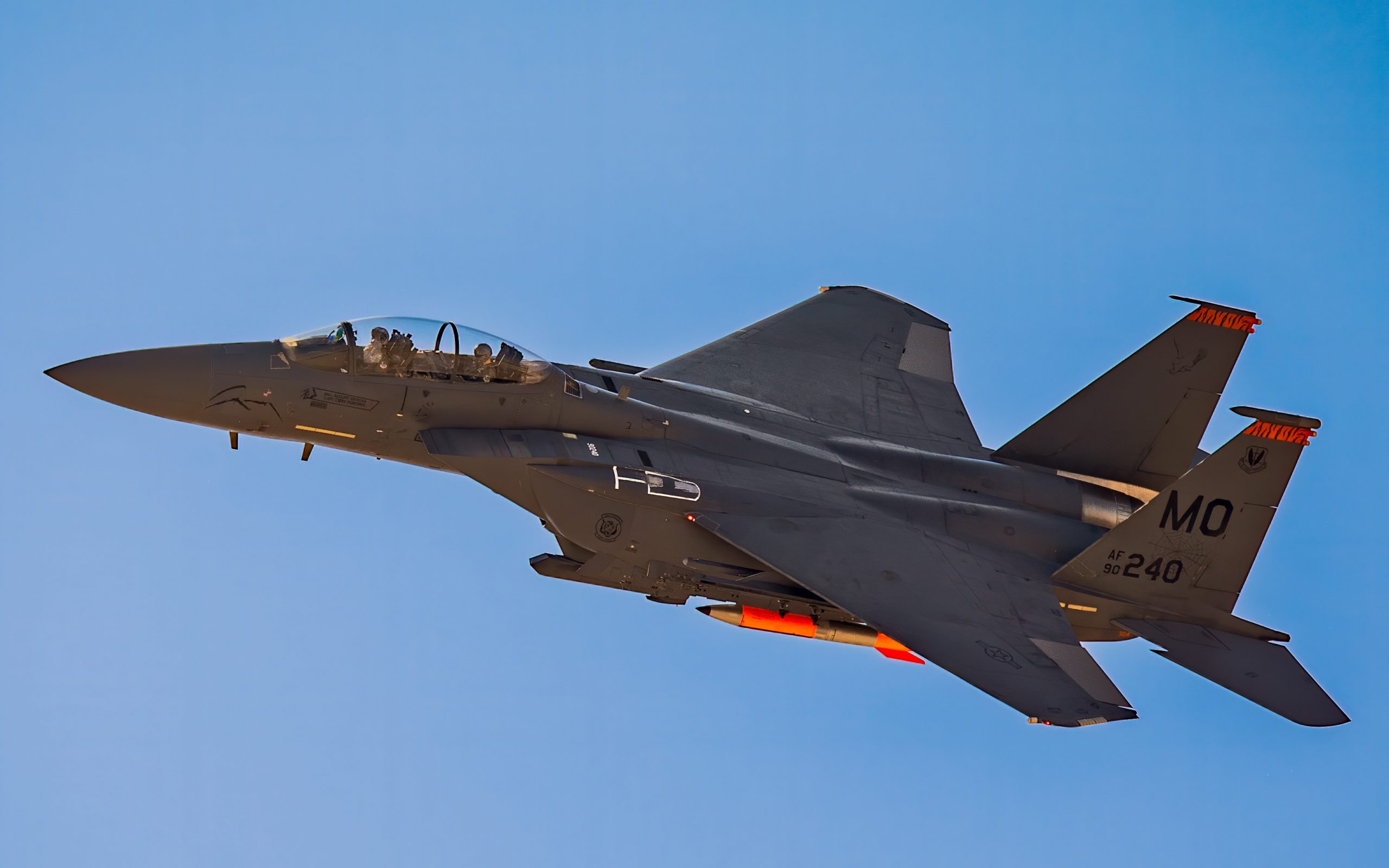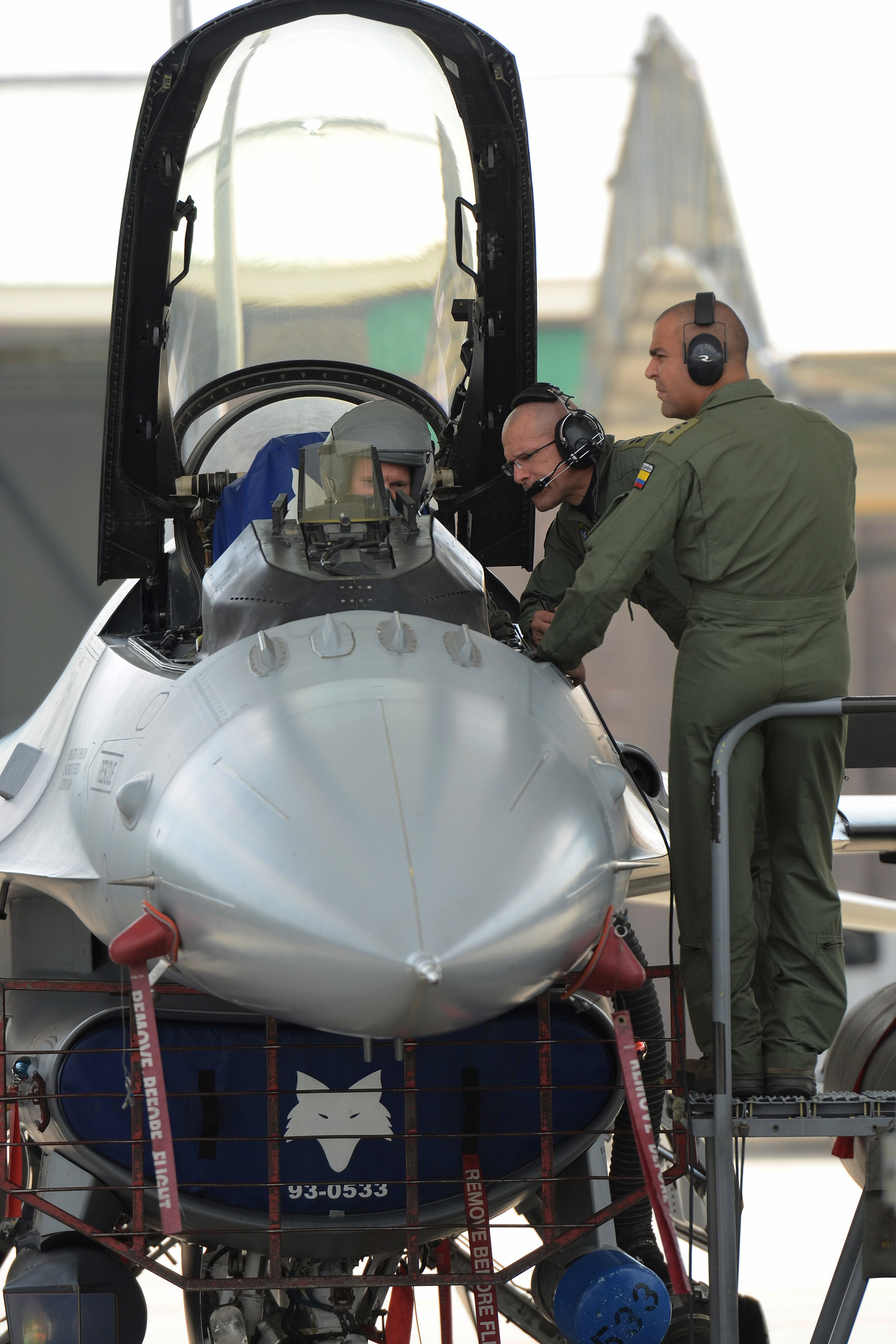Tactical Aircraft Maintenance Air Force - Crash Recovery/Wheel and Tire: Crash Recovery duties require technicians to be available to respond to any in flight emergencies or crashes. Most of the time, they tow the aircraft back up to the flight line from the end of the runway.
These technicians also replace and rig crucial safety of flight components like flight controls, air inlet ramps, landing gear, canopies, and other cable systems like nose wheel steering or start handles. As you can imagine, keeping an aircraft worth hundreds of millions of dollars in tip-top shape is a complex process.
Tactical Aircraft Maintenance Air Force

Serious teamwork between airmen in several different Air Force Specialty Codes (AFSC) is vital to make it happen. The cool thing about this career field is that it is specialized to the point that you get to maintain military fighter aircraft, but you are still maintaining aircraft.
Civilian Careers Related To Tactical Aircraft Maintenance
Every major city in the world has an airport, and they need people to work on airplanes. If you are stationed at a base that deploys on a regular cycle, find out how often you can expect a deployment.
For my first base, our cycle was every two years. 6 months is a long time to be gone, but it is where you will get a lot of valuable experience and sharpen your skills as a maintainer.
1530 – After getting your tools turned in, you check out with your flight chief to see if there is anything for you. He reminds you that you have a computer based training that you need to knock out.
1000 – STEPS! You're notified that your pilot has stepped. You finish breaking the jet down, unpin the ejection seat. The pilot shows up, you greet him and hand him the forms. He's pretty chill but he's too cool for small talk.
Deployments/Tdys Tactical Aircraft Maintenance
It involves supervising flight and crew chiefs, conducting quality assurance tests and overseeing maintenance support functions. In many respects, this role is as important to the successful deployment of Air Force aircraft as the pilots who fly them.
1430 – Your turnover shows up to relieve you. You give him any details about the jet he needs to know about and any hip pocket items that you found on your inspection that need to be addressed.
You push your tools into support. Most Aircraft Maintenance Units will go on multiple TDYs every year. This stands for temporary duty. These typically include trips to other Air Force Bases throughout the world, and they are a great opportunity to travel.
Also, do not feel limited to aircraft maintenance when you decide to pursue a civilian career. You are a marketable veteran that can use your leadership, time management, attention to detail, production processes skills to land a good job.
Job Description Tactical Aircraft Maintenance
Air Force recruiting literature states that anyone interested in "aircraft, electronics, computer science, engineering, maintenance, and repair, [or] physics" may find this career engaging. But regardless of their interests, before enlisting, recruits must graduate high school and pass the Armed Services Vocational Aptitude Battery (ASVAB) with a qualifying Air Force mechanical score of 47 or higher.
1600 – You get logged in on a computer to do your training so you don't get in trouble. You get bitter because of the administrative work you have to knock out after spending your whole day on the flight line.
In addition, these airmen remove and install aircraft components, conduct functional tests of repaired components and systems and adjust, align and rig aircraft systems. It's up to them to supervise aircraft being jacked, lifted or towed.
1245 – Now it's go time. You must get your aircraft turned for the next go. You perform a thruflight inspection which includes, oil and hydraulic servicing, tire changes if needed, refuel, and any major safety of flight conditions that may need to be addressed.
Professionalism Tactical Aircraft Maintenance
Network: If you are busting your ass at work most people are going to like you because you're a get it done kind of maintainer. Network with your peers and supervisors to get to know them at a little more personal level.
You never know how these friendships could come in handy. Remember, keep it professional. Following a career in the Air Force, crew chiefs may work as aircraft and avionics equipment mechanics or technicians, although the Bureau of Labor and Statistics predicts that field will grow "slower than average" through 2020. This may be one of those fields where,
if you enjoy the military, a 20-year hitch to retirement isn't such a bad idea. There is a long list of responsibilities for these airmen, which varies slightly depending on where they're stationed and what aircraft they're assigned.
But in all circumstances, aircraft maintenance specialists perform end-of-runway, post-flight, preflight, thru-flight and phase inspections. Education: Pursuing an educational goal while you're working on the flight line will set you apart from your peers when it comes to performance reports.
Certifications And Career Outlook
Consider a degree path that relates to the job you're doing. So enjoy your time in Texas. Use the weekend to go out with friends or classmates to do something fun. I recommend going to Wichita Mountains for a day trip or going to Dallas for a sports event.
Those assigned to work on F-16 fighter jets, for example, move on to Luke Air Force Base in Arizona to finish training. Alternatively, airmen chosen to work on the F-35 may find themselves concluding training at Eglin Air Force Base in Florida.
But, again, course length may vary. You may get picked on, you may get made fun of, but it is used as a learning tool so you will not keep making the same mistakes. Take everything with a grain of salt and don't make the same mistake twice.
0700 – Roll call. Your bitter flight chief will call out training that everyone has gone overdue on and your 7 levels will give out assignments for the day. You get assigned to a "flyer" and are expecting 1000 steps.
Maintenance Support Functions: Maintenance Support Technicians work in the support section. They maintain support equipment, perform tool inventories, inspect consolidated tool kits, deal with disposal of hazardous waste, and pack up cargo for TDY's and Deployments.
They come to work to do just that… work. If there isn't any work to be done or there is down time while their jet is in the air, they'll study technical data to increase their system knowledge of their assigned airframe.

Tactical aircraft maintenance specialists spend the requisite 7.5 weeks in basic training (also known as boot camp) and participate in Airmen's Week. Then they go to Sheppard Air Force Base in Wichita Falls, Texas for technical training.
0800 – You got your tool box pushed out to your jet. You start to look it over, review the forms and hope you don't find anything messed up before the fly day. You remove the covers and set it up for a launch.
If you have time, you spend a good amount of time cleaning it. Knowledge of principles applying to aircraft systems, concepts and application of maintenance directives and data reporting and using technical data are all required and will be key parts of technical school training.
You'll also need to know Air Force supply and deficiency reporting procedures and proper handling, use, and disposal of hazardous waste and materials. So take notes and outline the material in a notebook the day before it is covered in a lecture.
They forced us to do this when I was coming through and it honestly helped me a lot. You get exposed to the material 3x. (Reading it, writing it, and hearing it) If you are single, volunteer to go on every deployment that you can.
Sometimes they can come up at a moment's notice. Your pay is tax free, you could earn danger zone pay, and you can spend the time deployed to improve yourself by hitting the gym hard, hitting college hard, and you'll make lifelong friends in the process.
:quality(70)/cloudfront-us-east-1.images.arcpublishing.com/archetype/PPSTGJKGMVBJDCF6KHLNPQ33X4.jpg)
It's hard to say how long the rest of a crew chief's initial schooling takes. This official fact sheet from the Air Force claims initial training at Sheppard lasts close to three months, but that may not include training on a specific aircraft.
0900 – You head to FOD walk. A crusty TSgt has emerged from his office for the first time in weeks to lead it. You walk the entire flight line looking for Foreign Objects (FOD). The crew chiefs walk under the jets like always while the other shops walk in front and behind the aircraft.
As a new Airman, there are a few different career paths that you could take. The most common one is a flight line crew chief. That is what I described above. This is what people think of when they hear of crew chiefs.
Work Ethic: Work while you're at work! Do not spend an extended amount of time on your phone at work, and if there is any maintenance going on, be a part of it. ESPECIALLY, if you have never done the task before.
Become an expert Airman by learning how to do your job better than anyone else. If there is down time, study technical data to increase your system knowledge. If you have read through this article and think you have what it takes to be a Tactical Aircraft Maintainer, this career might be a good choice for you.
Check out What You Should Know Before Deciding to Join the Military before you head out to the recruiter's office. In that group, the tactical aircraft maintainers are commonly known as "crew chiefs" because they're generalists who coordinate the aircraft's care and call in the specialists (like avionics or propulsion technicians) when they find a problem.
In other words, if the jet were a patient in a hospital, the crew chief would be his primary doctor, coordinating with specialists in radiology, psychology, and the like as needed.
tactical aircraft maintenance bases, 2a3x3, tactical aircraft maintenance tech school, air force aircraft maintenance ttp, tactical aircraft maintenance specialist, 2a333 air force, tactical aircraft mechanic, 2a337 air force


